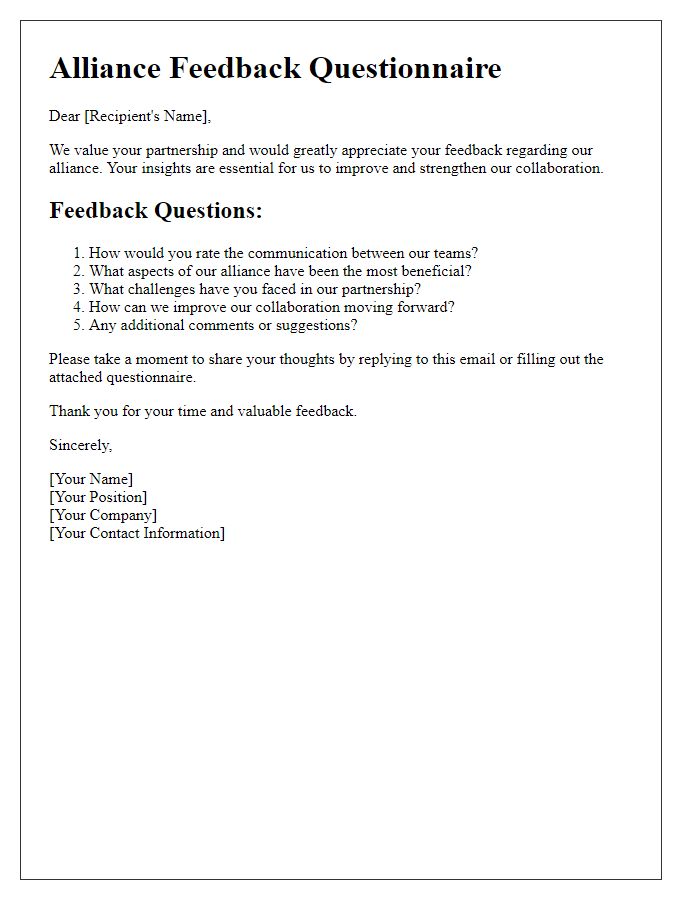Are you looking to strengthen your partnerships and gather valuable insights? Creating a feedback request letter is a simple yet effective way to engage your partners and enhance collaboration. In this article, we'll explore the essential components of a well-crafted feedback request letters that not only conveys your message but also fosters strong relationships. So, let's dive in and discover how you can craft the perfect letter to invite constructive feedback!

Clear purpose and intent
In the realm of business collaborations, establishing a feedback loop is essential for continuous improvement and growth. Constructive feedback from partners provides valuable insights that can enhance operational efficiency and strengthen relationships. Effective feedback requests should clearly outline the purpose, such as assessing project outcomes or evaluating communication strategies. Specific criteria such as collaboration effectiveness, resource allocation, and mutual support can guide partners in providing focused responses. Additionally, choosing the right platform for gathering feedback, whether via surveys, meetings, or written reports, can significantly influence the depth and quality of responses received. Ultimately, fostering an open environment encourages transparency and partnership alignment, crucial for long-term success.
Concise language and structure
In a professional relationship, feedback from partners is vital for assessing collaboration effectiveness. Constructive feedback offers insights into strengths, areas for improvement, and alignment with objectives. Regularly scheduled evaluations enhance communication and foster a culture of transparency. Surveys or structured interviews can facilitate the feedback collection process, providing specific metrics for quantitative analysis. Ensuring anonymity encourages honest responses, leading to actionable strategies that enhance future partnership outcomes. Engaging with partners post-feedback, discussing results, and implementing changes fosters trust and collaboration.
Personalized salutation
Personalized salutation addresses the recipient by their name, fostering a sense of connection. This approach shows respect and recognition, making the feedback request more engaging. For instance, using a name like "Dear Sarah" instead of a generic greeting creates an immediate personal touch. Utilizing titles such as Mr., Mrs., Dr., or Ms. can enhance formality, especially in professional contexts. Personalization can lead to increased response rates, enhancing the quality of the feedback received. A thoughtful and tailored approach reflects the importance of the partnership, encouraging more honest and constructive responses.
Specific feedback questions
Partnership feedback can enhance collaboration effectiveness. Organizations such as companies, nonprofits, or community groups often seek insights from stakeholders. Questions might include: What aspects of our partnership exceeded your expectations? How effectively did communication flow between teams? Are there specific challenges you encountered during our collaboration? What improvements could be made for future projects? Your feedback is critical for continuous improvement and fostering successful partnerships.
Call to action and contact details
To foster collaboration and enhance mutual success, organizations often seek partnership feedback to improve strategies and initiatives. Constructive feedback can reveal insights into joint operations, identify strengths, and highlight areas for improvement. Engaging partners in this dialogue not only strengthens relationships but also drives innovation and efficiency in service delivery. For effective communication, organizations typically invite partners to share their experiences and suggestions via surveys or direct communication. Employing various contact details, such as dedicated emails or phone numbers, ensures that partners have accessible avenues for sharing their valuable input.













Comments